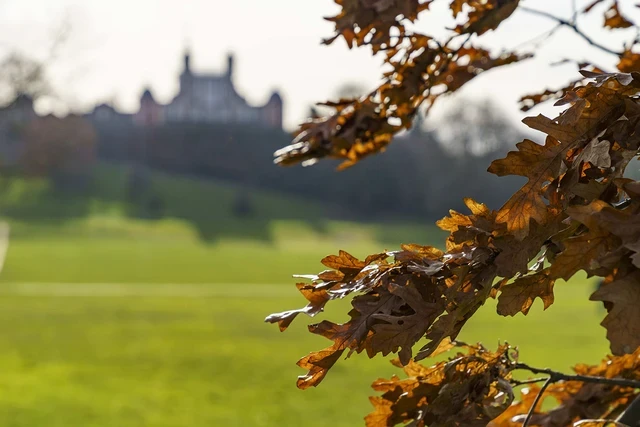
Welcome to Greenwich Park
This charming landscape has watched over the ever-changing city of London for hundreds of years.
Key information
Greenwich Park has welcomed generations of visitors – from ancient Romans and Anglo-Saxons to Tudor monarchs and Victorian sailors. All of them have prized its dramatic scenery and famous views over the capital. Come on in and find out why…
Discover the park’s most popular spot, at the top of its highest hill. From here, admire sweeping views over London’s skyline. How many landmarks you can spot? Spectacular views can also be enjoyed away from the crowds, at the summit of peaceful One Tree Hill. You’ll see why it’s long been a magnet for artists and writers.
Sitting in the middle of the park is the world-famous Royal Observatory, where the Greenwich Prime Meridian begins. This is the line that divides the world into Eastern and Western hemispheres – in the park, you can hop from one side of the world to the other, then buy a ticket to discover more inside the Observatory itself.
As you enjoy the shade of historic tree avenues, you might come across traces of earlier visitors to the park – from the remains of a Roman Temple in the south, to the distinctive mounds of the Anglo-Saxon cemetery to the east. Don’t forget to saunter around the picturesque Flower Garden while you’re here – its stately trees and bright beds of flowers are a sensory delight.
Discover more about Greenwich Park
-
Turner at Greenwich Park
Nicknamed the ‘painter of light’, J.M.W. Turner is one of the most celebrated artists that Britain has ever produced.
-
Best trees to see this Autumn in London’s Royal Parks
Autumn has arrived in the Royal Parks and we've put together a list of the best trees to see this season.
-
Charles Dickens at Greenwich Fair
Over the centuries, many famous writers have found inspiration at Greenwich Park. Perhaps the most celebrated is Charles Dickens (1812-1870).
